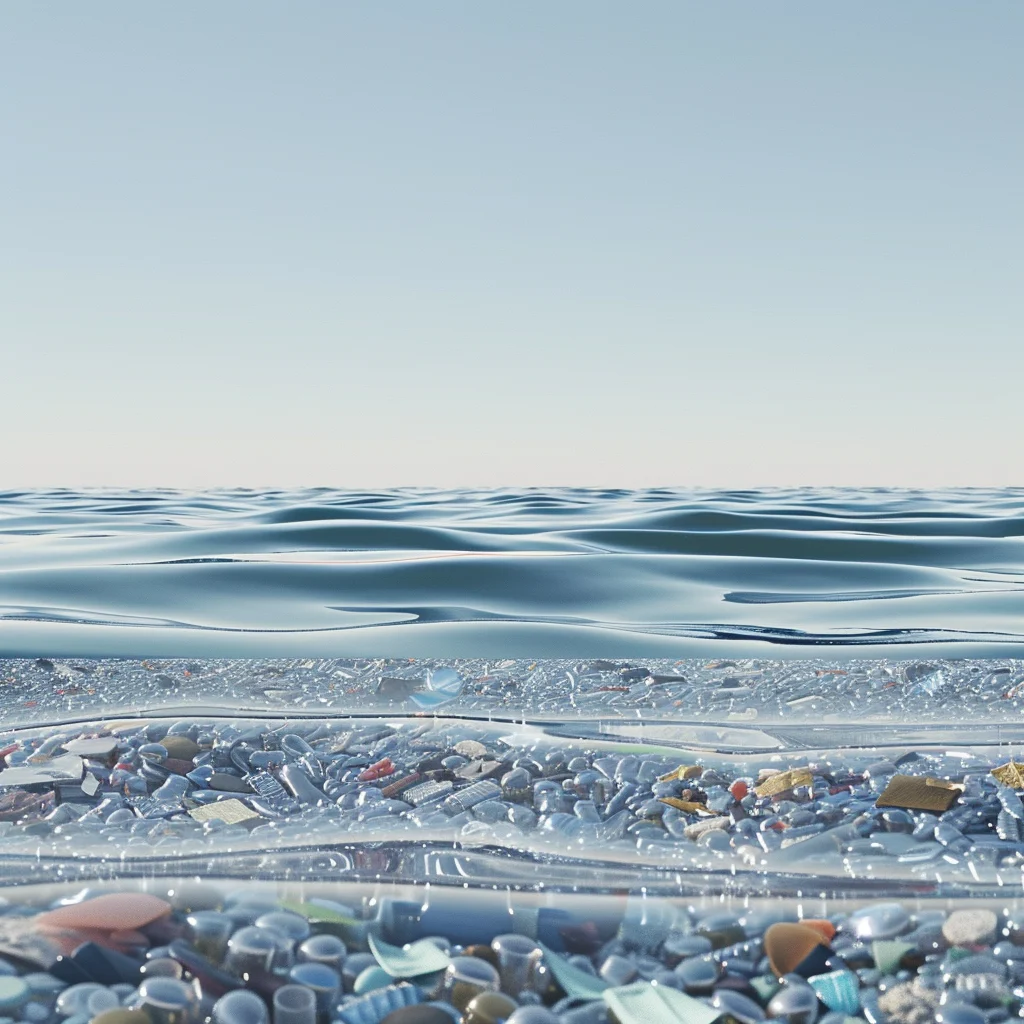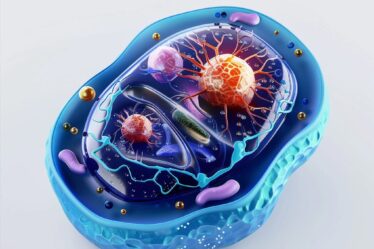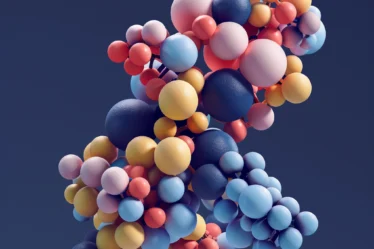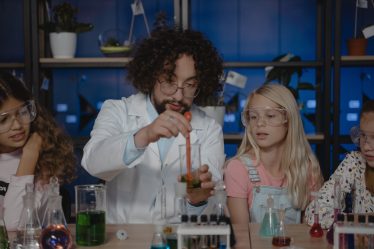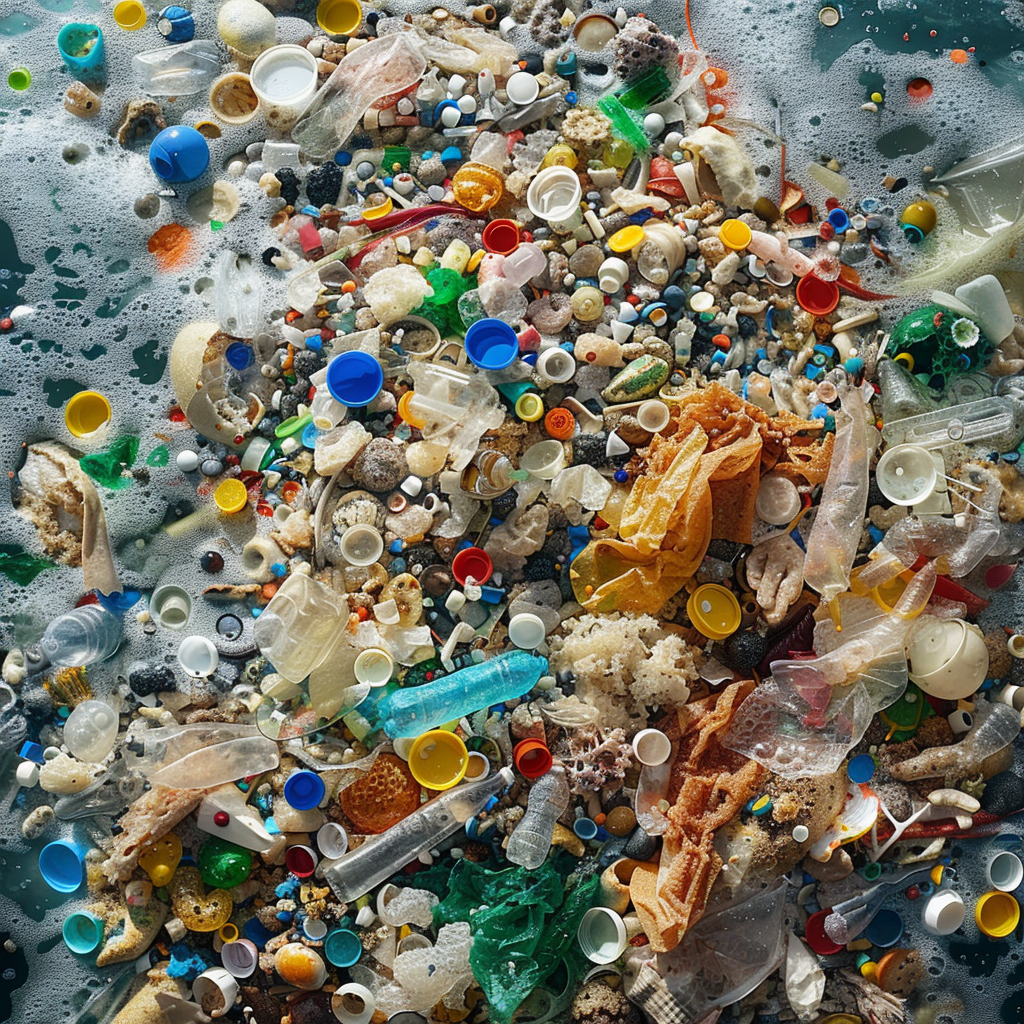
Microplastics are tiny plastic particles less than 5mm in size. They come from the breakdown of larger plastic items or are manufactured small for specific uses. These tiny particles are a big environmental problem because they are everywhere, including oceans, rivers, and even the air.
Microplastics come from sources like cosmetics, clothing, and industrial processes. Because they are so small, marine animals can easily ingest them and enter the human food chain, posing health risks.
We will examine where microplastics come from, their impact on the environment and health, and how to tackle this issue.
If you’re looking to improve your study habits, our blog on how to learn efficiently has some great tips. We also discuss the pros and cons of online learning and provide an honest look at homeschooling benefits and challenges. You can find all these and more in our learning tips section.
Essentials of Microplastics and Biofilm
Are you short on time? Here are the must-know aspects of microplastic, biofilm and agglomeration:
🟠 Microplastics: Tiny plastic particles less than 5mm in size, found in oceans, rivers, and even the air, threaten marine life and human health.
🟠 Biofilm: A layer of microorganisms that stick to surfaces, including microplastics, helping transport harmful chemicals and pathogens in aquatic environments.
🟠 Agglomeration: The clumping of microplastics can impact their behavior in the environment and affect marine ecosystems by settling in sediments and transporting pollutants.
Sources of Microplastics
Microplastics come from two main sources: primary microplastics and secondary microplastics. These tiny particles are found in everyday products and result from various industrial processes.
Primary Microplastics
Primary microplastics are small plastic particles that are intentionally manufactured to be tiny. We use them in a variety of products and industries.
For example, we use microbeads in personal care products like exfoliating scrubs and toothpaste. These beads are designed to help with cleaning and polishing but can end up in waterways after use. Another example is plastic pellets, also known as nurdles, which are the raw material for making plastic products. These pellets can spill during transport and manufacturing, contributing to environmental pollution.
Primary microplastics are a significant source of pollution because they are already small and can quickly enter natural environments.
Secondary Microplastics
Secondary microplastics are formed from the breakdown of larger plastic items. This breakdown can happen through weathering, UV radiation, and physical abrasion. Over time, larger plastic items like bottles, bags, and fishing nets degrade into smaller and smaller pieces.
For example, a plastic bag that gets caught in the ocean will eventually break down into tiny fragments due to the action of waves and sunlight. Similarly, synthetic fibers from clothing can be shed during washing, releasing small plastic particles into the water system.
These secondary microplastics are widespread and hard to manage because they can be very small and come from many sources.
Common Sources of Microplastics
Microplastics are found in many everyday products and result from various industrial processes. Synthetic clothing, personal care products, and plastic containers contribute to microplastic pollution in households. Washing synthetic fabrics can release thousands of tiny fibers into the water.
Industrial processes also play a significant role. For instance, plastic manufacturing and recycling operations can release microplastics into the environment through spills and improper waste management. Additionally, road tire wear produces microplastic particles that wash into drains and eventually reach waterways.
Microplastics in the Sea
Microplastics in the sea are a major environmental issue. These tiny particles are found in oceans worldwide, threatening marine life and ecosystems. Microplastics enter the sea from wastewater from washing synthetic clothes, landfill runoff, and littering. Ocean currents carry them everywhere, even to remote areas. Marine animals, from tiny plankton to large whales, ingest microplastics, which can cause physical harm and introduce toxic chemicals into the food chain.
To reduce microplastics in the sea, we need better waste management, less plastic use, and new technologies to capture microplastics before they reach the water.
Biofilm on Microplastics
A biofilm is a thin layer of microorganisms that sticks to surfaces, including microplastics. Biofilms on microplastics can help these particles transport harmful chemicals and pathogens. In water environments, microplastics are perfect surfaces for biofilm formation, allowing bacteria and other microorganisms to thrive. This can spread dangerous bacteria and viruses, affecting water quality and posing health risks to marine life and humans. Research is ongoing to find ways to prevent biofilm formation and reduce the transport of harmful microorganisms.
Agglomeration of Microplastics
Agglomeration means clumping together of particles, like microplastics. This process can change how microplastics behave and affect the environment. Agglomeration happens when microplastics collide and stick together, forming larger clusters. Water currents, chemical makeup, and biofilms can influence this process. Agglomerated microplastics settle more easily in sediments, impacting bottom-dwelling organisms. These larger clusters can also transport pollutants more effectively, posing risks to marine ecosystems.
Environmental Impact of Microplastics
Microplastics have severe effects on marine life and ecosystems. They contaminate habitats, harm aquatic organisms, and disrupt the balance of ecosystems.
Impact of Microplastics on Marine Life
Marine animals, from tiny plankton to large whales, can ingest microplastics. When ingested, these particles can cause physical damage to the digestive system, block nutrient absorption, and lead to malnutrition or starvation. For example, fish and seabirds often mistake microplastics for food. This can fill their stomachs with indigestible plastic, reducing their ability to consume actual food. Ingested microplastics can also carry harmful chemicals that may leach into the animals’ bodies, causing further health issues.
Bioaccumulation in the Food Chain
Microplastics can accumulate in the bodies of marine organisms and move up the food chain. Tiny organisms like plankton ingest microplastics, which larger predators eat. As these plastics move up the food chain, their concentration increases, a process known as bioaccumulation. This means that top predators, including humans who consume seafood, can have higher concentrations of microplastics and associated toxins. This bioaccumulation poses significant health risks to all organisms in the food chain, including potential reproductive and developmental problems.
Impact of Microplastics on Ecosystems
Microplastics contaminate various habitats, including oceans, rivers, and coastal areas. These particles can settle on the seabed, mix with sediments, or remain suspended in the water column. Contaminated habitats can affect the survival and reproduction of marine organisms. For example, microplastics in sandy beaches can affect sea turtle eggs’ hatching by altering the sand’s temperature and composition. In coral reefs, microplastics can smother corals and hinder their growth and reproduction.
Effects on Biodiversity
Microplastics can reduce biodiversity by affecting the health and survival of various species. Species that ingest or get entangled in microplastics can experience reduced fitness, leading to decreased populations. This reduction in species can alter the structure and function of ecosystems. For example, if crucial species like plankton or small fish are affected by microplastics, it can have a cascading effect on the entire food web, impacting species that rely on them for food. The loss of biodiversity can weaken ecosystems, making them more vulnerable to other stressors like climate change and overfishing.
Mitosis is fascinating—seeing how cells divide is like watching a mini-miracle. And while you’re at it, explore topics like biodiversity and homeostasis to see how life stays balanced.
Is Microplastics Dangerous to Humans
Microplastics pose potential health risks to humans through various exposure pathways, including ingestion, inhalation, and dermal contact. These tiny particles can have harmful effects on our bodies.
Exposure to Microplastics
Humans can be exposed to microplastics in several ways. We ingest them through contaminated food and water. Seafood, salt, and even bottled water have been found to contain microplastics. We can also inhale microplastics in the air, especially in urban areas. Dermal contact, though less common, can occur through personal care products containing microplastics.
Potential Health Effects
The health effects of microplastics on humans are not fully understood, but there are concerns. Ingested microplastics can cause physical damage to the digestive system and may carry harmful chemicals, leading to inflammation and other health issues. Inhaled microplastics can penetrate deep into the lungs, potentially causing respiratory problems. Some studies suggest that microplastics might disrupt endocrine functions and contribute to diseases like cancer, though more research is needed.
Studies on Microplastics in the Human Body
Recent studies have found microplastics in human tissues, including the lungs, liver, and placenta. Research is ongoing to determine how these particles interact with human cells and what effects they might have. Scientists are particularly concerned about the potential for microplastics to carry toxic chemicals into the body, where they could cause harm.
Long-term Health Implications
The long-term health implications of microplastic exposure are still being studied. Potential risks include chronic inflammation, increased cancer risk, and reproductive issues. Researchers also examine how long-term microplastic exposure might affect the immune system and overall health.
Fungi—the amazing decomposers, turning waste into new life.
Addressing the Microplastics Problem
Efforts to reduce microplastics focus on lowering their production and release into the environment. These efforts involve personal actions, technological advancements, and better industrial practices.
How to Reduce Microplastic Pollution
You can help reduce microplastic pollution by making small changes in your daily life:
- Use Reusable Items: Choose reusable bags, bottles, and containers instead of single-use plastics.
- Choose Natural Fibers: Opt for clothing made from natural fibers like cotton or wool instead of synthetic ones.
- Avoid Products with Microbeads: Look for personal care products that do not contain microbeads.
- Wash Clothes Wisely: To reduce fiber shedding, use a laundry bag designed to catch microfibers and wash clothes less frequently.
Technological and Industrial Solutions
Industries and technology play a significant role in reducing microplastic pollution:
- Improved Filtration: They install better filtration systems in washing machines to capture microfibers before they enter wastewater.
- Biodegradable Plastics: Developing and using biodegradable alternatives to traditional plastics.
- Better Waste Management: Adopting better waste management practices to prevent plastic spills and leaks.
- New Materials: Researching and creating new materials that degrade more quickly and safely in the environment.
By taking these steps and encouraging industries to adopt these solutions, we can significantly reduce the impact of microplastics on our planet.
Are you curious about how different chemical compounds form? We’ve got all the details. Plus, if you’re feeling adventurous, learn how to make soap at home—it’s simpler than you might think!
Tips for Learning About Microplastics
Microplastics are tiny but pose a big problem for our environment and health. We’ve explored their sources, from everyday products to industrial processes, and their impacts on marine life, ecosystems, and human health. By understanding how microplastics affect us, we can take action to reduce their presence. Using reusable items and avoiding products with microbeads, combined with better filtration systems and biodegradable plastics, can help tackle this issue. Working together, we can make a significant difference in reducing microplastic pollution and protecting our planet.
If you’re looking for a biology tutor, try searching for “biology tutor Liverpool” or “biology teacher London” on a platform like meet’n’learn. This can help you find the perfect private teacher for your needs.
If you prefer learning in a group, search for “biology classes Leeds” or “biology lessons Birmingham” online. You’ll find options at community colleges or educational workshops.
FAQs on Microplastics
1. What are microplastics?
Microplastics are tiny plastic particles less than 5mm in size.
2. How do microplastics enter the environment?
Microplastics enter the environment through products like cosmetics and synthetic clothing and by breaking down larger plastics.
3. How do microplastics affect marine life?
Microplastics in the sea are eaten by marine animals, causing health problems and sometimes death.
4. Can microplastics enter the human food chain?
Microplastics can enter the human food chain through contaminated seafood and water.
5. What are the potential health effects of microplastics on humans?
Microplastics can cause inflammation and may carry harmful chemicals into the body.
6. How can individuals reduce their microplastic footprint?
Use reusable items, choose natural fibers, avoid products with microbeads, and wash clothes less frequently.
7. What is a biofilm?
A biofilm is a thin layer of microorganisms that can form on surfaces, including microplastics in the sea.
8. What is agglomeration?
Agglomeration is when particles, like microplastics, clump together.
References:
1. NOAA
2. National Geographic
3. Wikipedia
